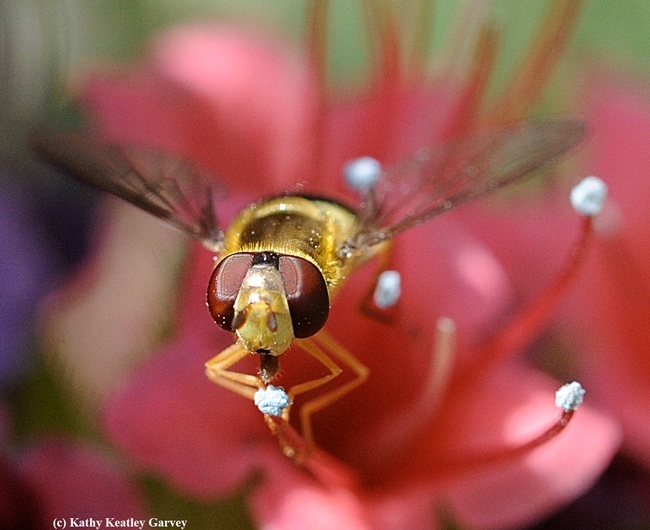It's Friday Fly Day!
And what better day than a Friday to post an image of a syrphid fly nectaring on a tower of jewels, Echium wildpretii? We all need "pretty" in our lives.
Syrphid flies, also known as "flower flies" and "hover flies," are pollinators that hover over a blossom before touching down.
"Most species are predaceous, most commonly on aphids or mealybugs," according to the UC Statewide Integrated Pest Management Program. "Some syrphids prey on ants, caterpillars, froghoppers, psyllids, scales, other insects, or mites. About 100 to 400 aphids can be fed upon by each aphid-feeding larva before it pupates, but this varies by the mature size of the syrphid relative to the aphids' size."
Folks who assume that every critter they see in, on, or around a flower is a honey bee should know a couple of distinguishing features: bees don't hover, and syrphids have only one pair of wings, while bees have two. "Their large eyes and short antenna also give them away," notes Kelly Rourke in her U.S. Forest Service article on "Syrphid Fly (Sphaerophoria philanthus). "The absence of pollinium, or pollen sacs, is more difficult to see, but is another difference from a bee. Of the nearly 900 species of flower flies (family Syrphidae) in North America, most have yellow and black stripes."
Happy Friday Fly Day!
Attached Images:
